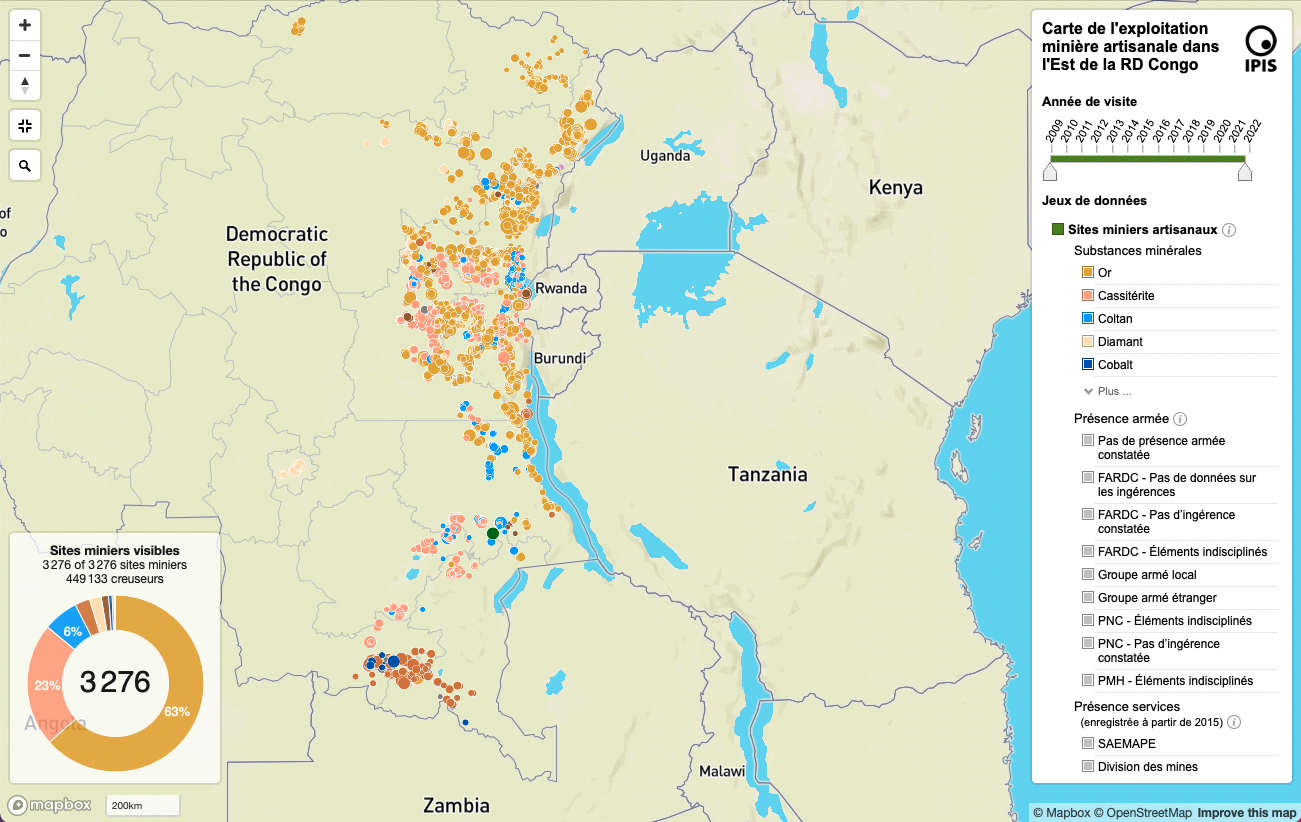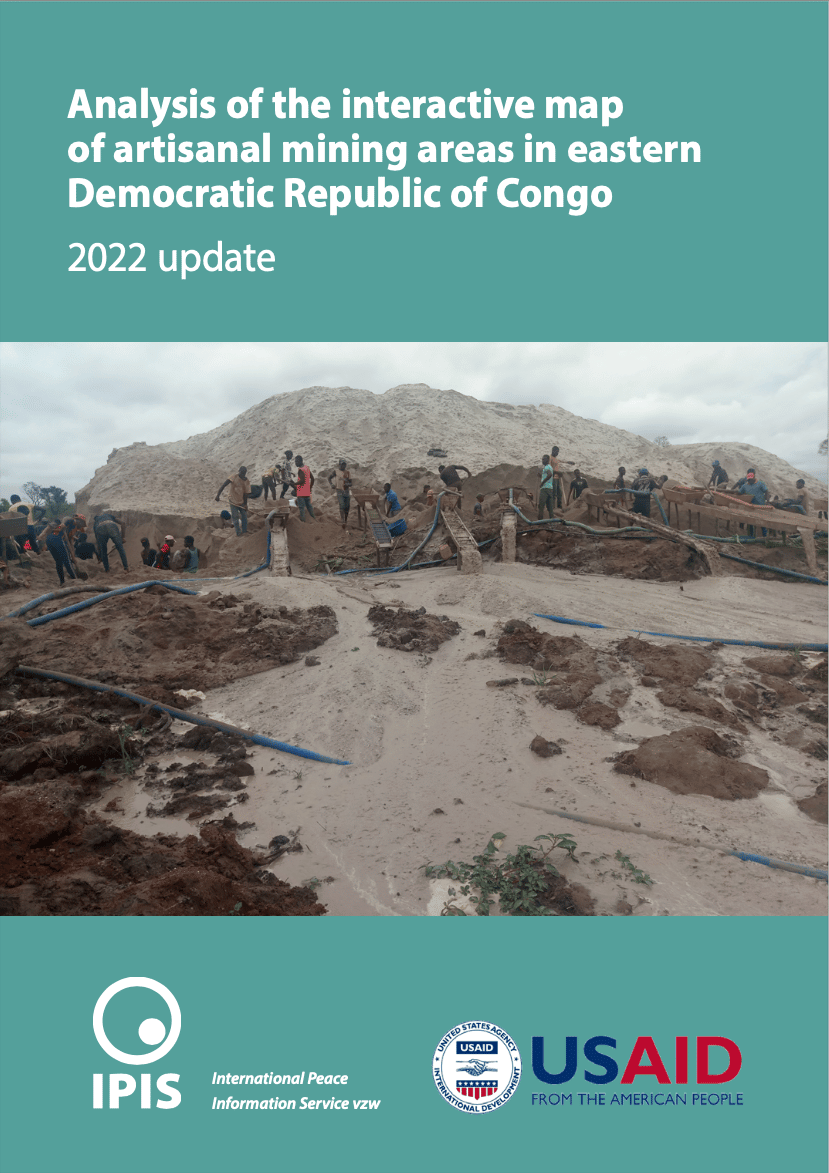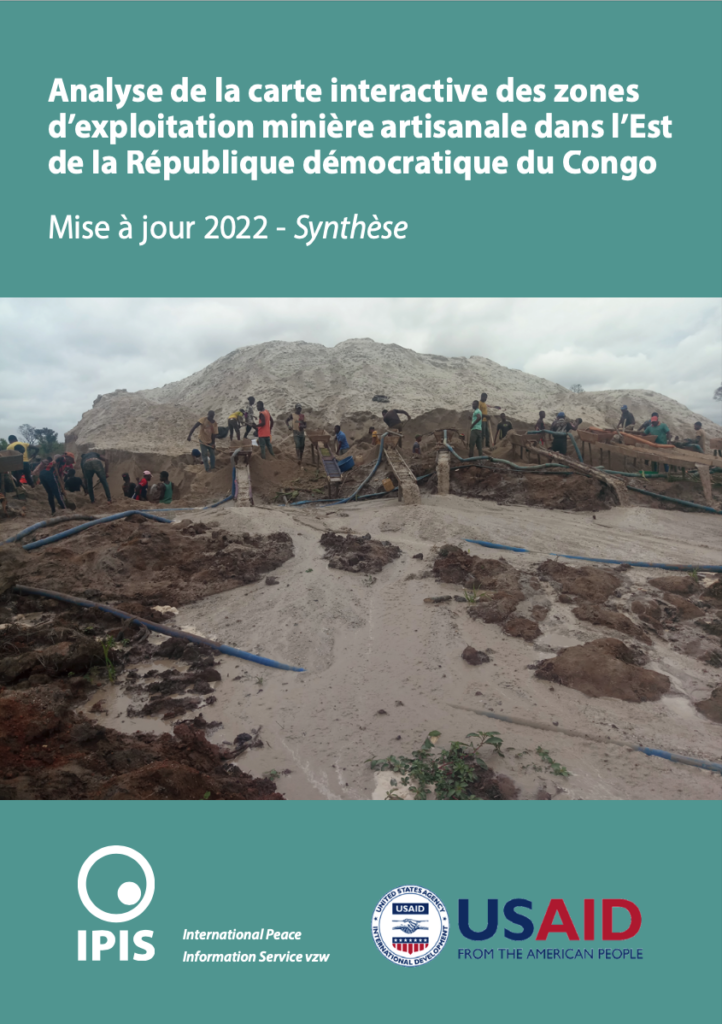In eastern Democratic Republic of Congo (DRC), the artisanal and small-scale mining (ASM) sector plays an important role in the local economy. While large-scale armed conflict over DRC’s mineral wealth has decreased significantly over the past twenty years, armed actors continuously interfere in the mining sector, and conflicts over resources at the local level are still common. IPIS has mapped around 2,720 ASM sites in eastern DRC since 2009, collecting primary data about the interference of armed groups, types of minerals, mineral pricing, worker demographics, trade routes, and environmental issues.
IPIS continues to regularly update its database of mining sites. Between September 2021 and March 2022, IPIS has visited 450 mining sites in eastern DRC with support of the United States Agency for International Development (USAID)’s Integrated Land and Resource Governance (ILRG) project. While site visits will continue until early 2023, the data collected so far can be consulted through IPIS’ interactive webmap and IPIS’ Open Data Dashboard.
An analysis of the newly visited mining sites shows that a range of armed actors are present at the mines. Of the armed actors, the Congolese national army (FARDC) is responsible for the most occurrences of interference. Of the mines visited by IPIS, twenty-seven percent of workers worked in mines where the FARDC extorts profit, mostly by illegal taxation. Although the FARDC has driven out armed rebellions from some areas, it also tolerates illegal interference in mining by other armed groups, and at times even collaborates with them. The FARDC is also increasingly present at semi-industrialized mining exploitations where they act as private security guards, potentially exacerbating tensions with local communities.
Rebel groups too interfere with mining. An illustrative example is the Front Patriotique pour la Paix–Armée du Peuple (FPP/AP), which is one of the strongest armed groups in South Lubero, and IPIS listed around thirty mining sites in the area under their control. At these mining sites the FPP/AP levies various taxes to finance itself. The FPP/AP is in active conflict with armed group Nduma Défense du Congo – Rénové (NDC-R), including over access to mining sites, leading to ongoing violence in the area.
Still, progress has been made over the past decade. ASM is no longer financing large-scale open conflict to the same extent as it did in the beginning of the century. Particularly in the 3T (Tin, Tantalum and Tungsten) sector progress has been made. Compared to gold mines, 3T mines score better when it comes to armed interference, security, and state oversight. This is partly due to responsible sourcing initiatives. 3T mines are, however, low-hanging fruit as the sector has traditionally been less prone to conflict financing than gold, and because it represents no more than 23% of the ASM sector in eastern DRC. It is disappointing to observe that after all these years, more than half of the miners are still affected by the interference of armed actors.
Beyond conflict financing there are other security issues associated with ASM in eastern DRC. Tensions around access to mines and minerals between various ASM stakeholders persist and can lead to involvement of armed groups. Furthermore, the increasing presence of semi-industrial exploitations represents another source of tension for local communities. Finally, several simmering inter-community tensions have been observed in mining areas, and a lot of former – but non-demobilized – militia members were working in the mines. These issues create a volatile situation which is difficult to monitor for state agents.
Supported by USAID, Integrated Land and Resource Governance (ILRG) project





